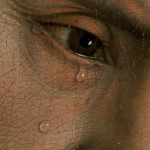MORE ON MOVIES THAT SHAPED OUR CULTURE: The Rat writes to remind me that the James Bond movies are quite different from the books (which I haven’t read); she suggests that although my Bond–>Lecter connection may be valid for the Bond of the movies, it doesn’t work for the Bond of the books.
Rob Dakin adds, “Notably absent from the list was DeMille’s silent ‘King of Kings,’ which I saw every year in the Easter season, still playing annually in theaters into the late 1950s. This movie changed me permanently. How does ‘Private Ryan’ change anything?
“…I just took another look at the list. I think that I would pick A Clockwork Orange over Star Wars. A Clockwork Orange contributed directly to the emergence of the punk phenomenon. Star Wars spawned only a series of sci fi flicks with advanced FX (and it came after 2001: a Space Odyssey, which was a better film). I also think that Easy Rider belongs on the list for the same kinds of reasons. How about The Wild Ones, Rebel Without a Cause, Niagara? There should be a Woody Allen film on the list, too. How about Frankenstein, Dracula, the original Hunchback of Notre Dame? King Kong? How about To Kill a Mockingbird? There is no end to this. American culture is so saturated with celluloid!”
Antoine Valentim answers my question about whether G-rated films do better at the box office than R-rated ones. He offers this link: “Does Hollywood Make Too Many R-Rated Movies? Risk, Stochastic Dominance, and the Illusion of Expectation.” Quotes: “We estimate the probability distributions of budgets, revenues, returns, and profits to G-, PG-, PG13-, and R-rated movies. The distributions are non-Gaussian and show a self-similar stable Paretian form with nonfinite variance and nonstationary mean. The profit distributions have asymmetric tails, which means that Hollywood could trim its ‘downside’ risk while increasing its ‘upside’ possibilities by shifting production dollars
out of R-rated movies into G-, PG-, and PG13-rated movies. Stars who are willing to appear in edgy, counterculture R-rated movies for their prestige value may induce an ‘illusion of expectation’ leading studios to ‘green-light’movies that have biased expectations.” As far as I can tell amid the statistical mumbojumbo, that means that yes, R-rated flicks are less profitable than G-, PG-, and PG13-rated flicks. For what that’s worth.
And Matthew Yglesias’s comments are here. I wonder what he means by, “I shudder to think where the culture would be if Eisenstein hadn’t invented the montage.” Either he’s missing the purpose of the list–which was to identify movies that shaped our culture in a fairly broad sense, rather than movies that revolutionized moviemaking–or he’s getting at something really interesting about how art forms shape the way we think. But if it’s the latter, then it would be cool if he could elaborate, since there’s no immediately obvious cultural change that can be attributed to the use of montage. (I could come up with the beginnings of theories–montage disrupts linear time progression; montage allows for a very allusive technique; montage gives the audience more power than “straight” filming, allowing us to make the connections between the various images and their implications–but hey, it’s not my claim, so I’ll let Yglesias handle it if he chooses.)
Conclusion: So far, nobody has thought “Saving Private Ryan” is one of the twenty movies that shaped our culture. Good. I didn’t want to see it and I’m glad to find I don’t have to.











